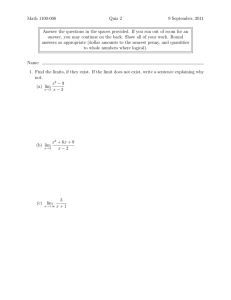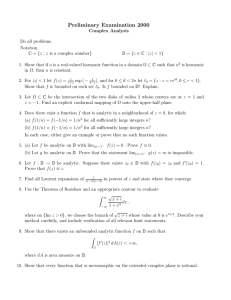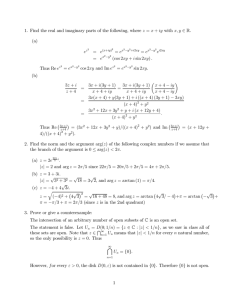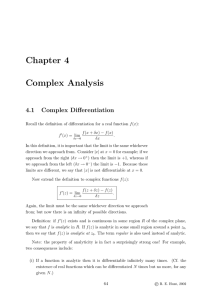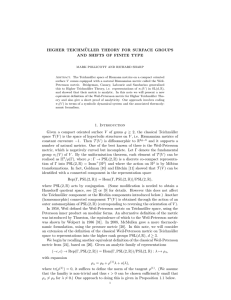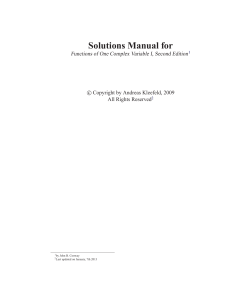Complex Analysis Comprehensive Exam August 25, 2008
advertisement
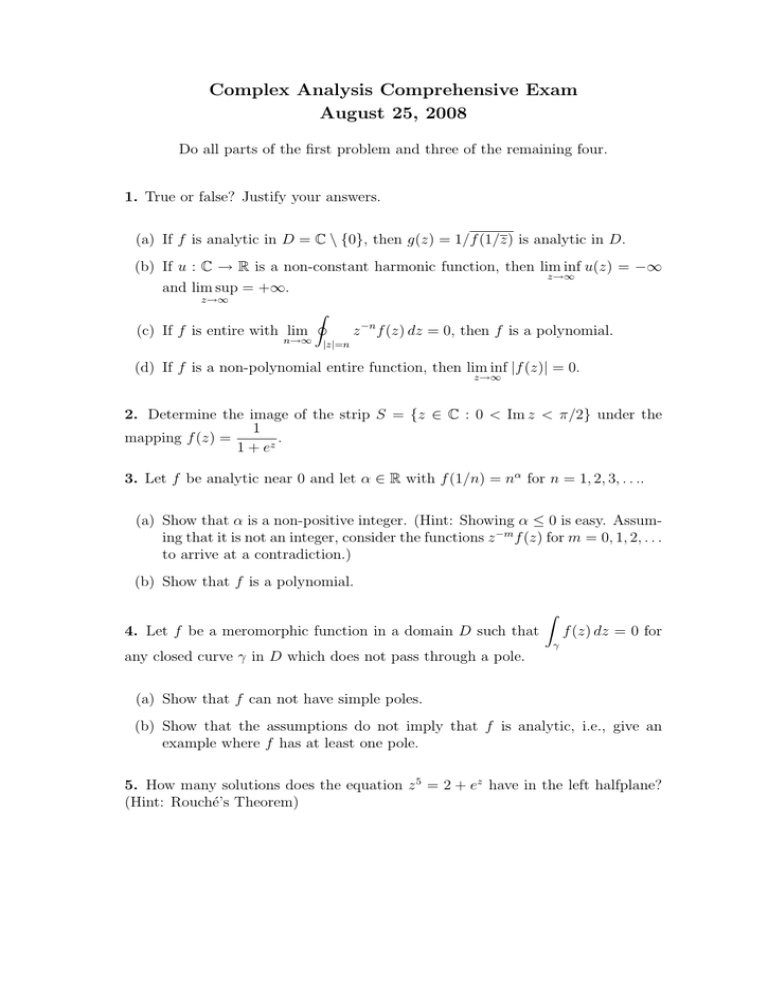
Complex Analysis Comprehensive Exam
August 25, 2008
Do all parts of the first problem and three of the remaining four.
1. True or false? Justify your answers.
(a) If f is analytic in D = C \ {0}, then g(z) = 1/f (1/z) is analytic in D.
(b) If u : C → R is a non-constant harmonic function, then lim inf u(z) = −∞
z→∞
and lim sup = +∞.
z→∞
I
(c) If f is entire with lim
n→∞
z −n f (z) dz = 0, then f is a polynomial.
|z|=n
(d) If f is a non-polynomial entire function, then lim inf |f (z)| = 0.
z→∞
2. Determine the image of the strip S = {z ∈ C : 0 < Im z < π/2} under the
1
.
mapping f (z) =
1 + ez
3. Let f be analytic near 0 and let α ∈ R with f (1/n) = nα for n = 1, 2, 3, . . ..
(a) Show that α is a non-positive integer. (Hint: Showing α ≤ 0 is easy. Assuming that it is not an integer, consider the functions z −m f (z) for m = 0, 1, 2, . . .
to arrive at a contradiction.)
(b) Show that f is a polynomial.
Z
4. Let f be a meromorphic function in a domain D such that
f (z) dz = 0 for
γ
any closed curve γ in D which does not pass through a pole.
(a) Show that f can not have simple poles.
(b) Show that the assumptions do not imply that f is analytic, i.e., give an
example where f has at least one pole.
5. How many solutions does the equation z 5 = 2 + ez have in the left halfplane?
(Hint: Rouché’s Theorem)
